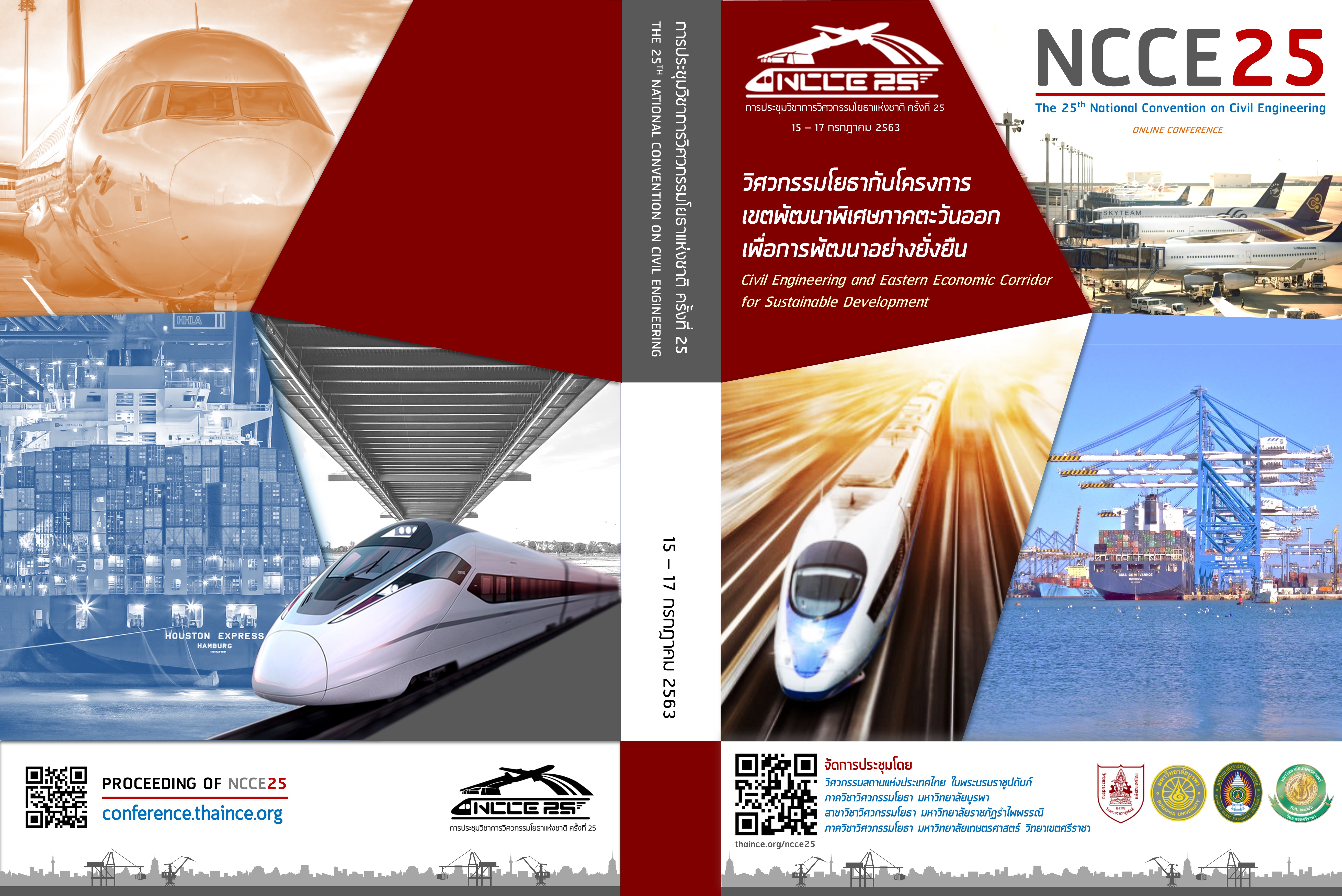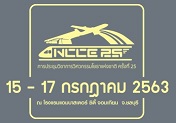Study on the properties of cellular lightweight concrete with non-metallic fraction from recycling of printed circuit boards as constituent
Keywords:
Non-metallic fraction, Cellular lightweight concrete, Water absorption, Compressive strength, Dry densityAbstract
At present, there are idea and interest in the use of plastic waste from the production of printed circuit boards (PCB) to reduce its impact on the environment. One way is to utilize such plastic waste as an ingredient in concrete products. The objective of this research is to study the effects of non-metallic fraction (NMF) obtained from PCB on the physical and mechanical properties of cellular lightweight concrete by replacing some fine aggregates with NMF at 10-50 percent by weight. The density of fresh concrete was controlled at 700 and 1,000 kg/m3 with constant water-cement ratio (W/C) of 0.5, and foaming agent obtained from mixing with water at ratio of 1: 40. The foamed concrete was prepared with a foam generator at a density of 50 kg/m3. The results showed that replacing sand with NMF resulted in slight variation of dry density of cellular lightweight concrete from the controlled values, and also resulted in increased compressive strength and water absorption. The studie suggested that cellular lightweight concrete can be manufactured by using NMF as partial replacement of sand, which meets the TIS specifications for cellular lightweight concrete block
Downloads
References
Ali A. Sayadi, Juan V. Tapia, Thomas R. Neitzert and G. Charles Clifton(2016).Effects of expanded polystyrene (EPS) particles on fire resistance,
thermal conductivity and compressive strength of foamed concrete. Construction and Building Materials, 112, pp.716–724.
Efe Ikponmwosa, Christopher Fapohunda, Olamiposi Kolajo and Otu Eyo(2017).Structural behaviour of bamboo-reinforced foamed
concrete slab containing polyvinyl wastes (PW) asvpartial replacement of fine aggegate, Journal of King Saud University – Engineering Sciences, 29, pp.348–355.
Chalermchai Chaitongrat and Somsak Siwadamrongpong(2018). Recycling of melamine formaldehyde waste as fine aggregate in lightweight concrete, Songklanakarin J. Sci. Technol, 40(1), pp.39-45.
กฤษณ์ กิ่งโก้ และ ปริญญา จินดาประเสริฐ (2553). คุณสมบัติของคอนกรีตมวลเบาระบบเซลลูล่าผสมสารซุปเปอร์พลาสติไซเซอร์. การประชุมทางวิชาการเสนอผลงานวิจัยระดับบัณฑิตศึกษา ครั้งที่ 11, ขอนแก่น, 12 กุมภาพันธ์ 2553, หน้า 399-407.
อภิวิชญ์ พูลสง (2556). การพัฒนาคอนกรีตมวลเบาผสมผงฝุ่นหินจากโรงโม่หิน. วารสารวิจัย, ปีที่ 6, ฉบับที่ 1, หน้า 94-102.
นวรัตน์ นิธิสุวรรณรักษา (2559). ผลของอัตราส่วนพลาสติกพอลิโพรไพลีนในอิฐมวลเบาต่อค่าความแข็งแรงอัดและสภาพนำความร้อน. วารสารวิชาการวิศวกรรมสารเกษมบัณฑิต, ปีที่ 6, ฉบับที่ 1, หน้า 174-187.
วันโชค เครือหงษ์ และ อภิวิชญ์ พูลสง (2560). สมบัติทางกล โครงสร้างจุลภาค การนำความร้อนและการหดตัวแห้งของคอนกรีตมวลเบาเซลลูล่าผสมเถ้าชานอ้อย. วารสารวิชาการเทคโนโลยีอุตสาหกรรม, ปีที่ 13, ฉบับที่ 2, หน้า 22-38.
Downloads
Published
How to Cite
Issue
Section
License
บทความทั้งหมดที่ได้รับการคัดเลือกให้นำเสนอผลงานในการประชุมวิชาการวิศวกรรมโยธาแห่งชาติ ครั้งที่ 25 นี้ เป็นลิขสิทธิ์ของ วิศวกรรมสถานแห่งประเทศไทย ในพระบรมราชูปถัมภ์



